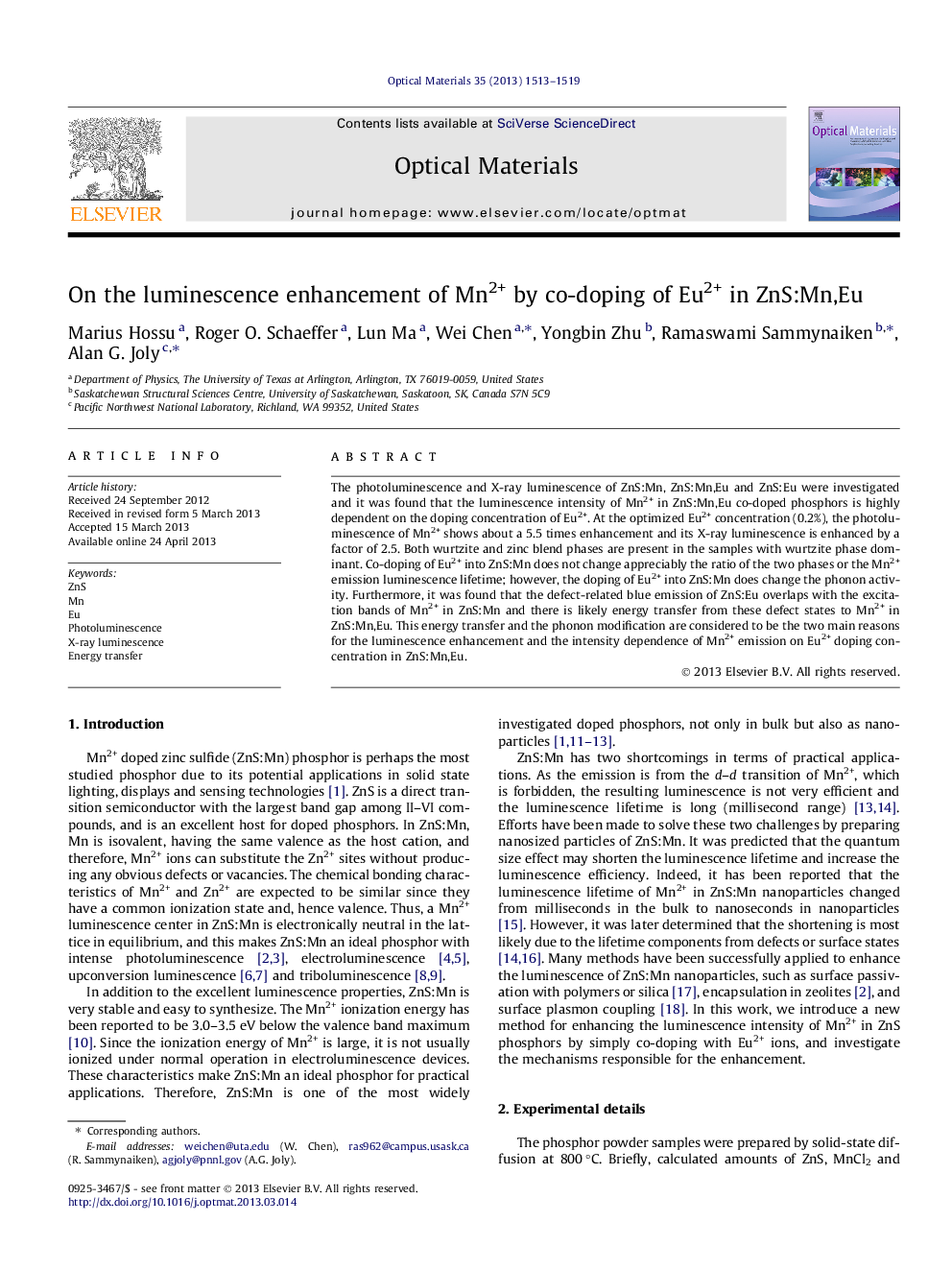| Article ID | Journal | Published Year | Pages | File Type |
|---|---|---|---|---|
| 1494270 | Optical Materials | 2013 | 7 Pages |
•The luminescence intensity of Mn2+ in ZnS:Mn,Eu is highly dependent on Eu2+.•The luminescence enhancement of Mn2+ by Eu2+ is as high as 5.5 times.•The X-ray luminescence enhancement is by a factor of 2.5.•There is energy transfer from Eu2+-related defects to Mn2+ in ZnS:Mn,Eu.•Energy transfer and phonon modification are responsible for the enhancement.
The photoluminescence and X-ray luminescence of ZnS:Mn, ZnS:Mn,Eu and ZnS:Eu were investigated and it was found that the luminescence intensity of Mn2+ in ZnS:Mn,Eu co-doped phosphors is highly dependent on the doping concentration of Eu2+. At the optimized Eu2+ concentration (0.2%), the photoluminescence of Mn2+ shows about a 5.5 times enhancement and its X-ray luminescence is enhanced by a factor of 2.5. Both wurtzite and zinc blend phases are present in the samples with wurtzite phase dominant. Co-doping of Eu2+ into ZnS:Mn does not change appreciably the ratio of the two phases or the Mn2+ emission luminescence lifetime; however, the doping of Eu2+ into ZnS:Mn does change the phonon activity. Furthermore, it was found that the defect-related blue emission of ZnS:Eu overlaps with the excitation bands of Mn2+ in ZnS:Mn and there is likely energy transfer from these defect states to Mn2+ in ZnS:Mn,Eu. This energy transfer and the phonon modification are considered to be the two main reasons for the luminescence enhancement and the intensity dependence of Mn2+ emission on Eu2+ doping concentration in ZnS:Mn,Eu.
